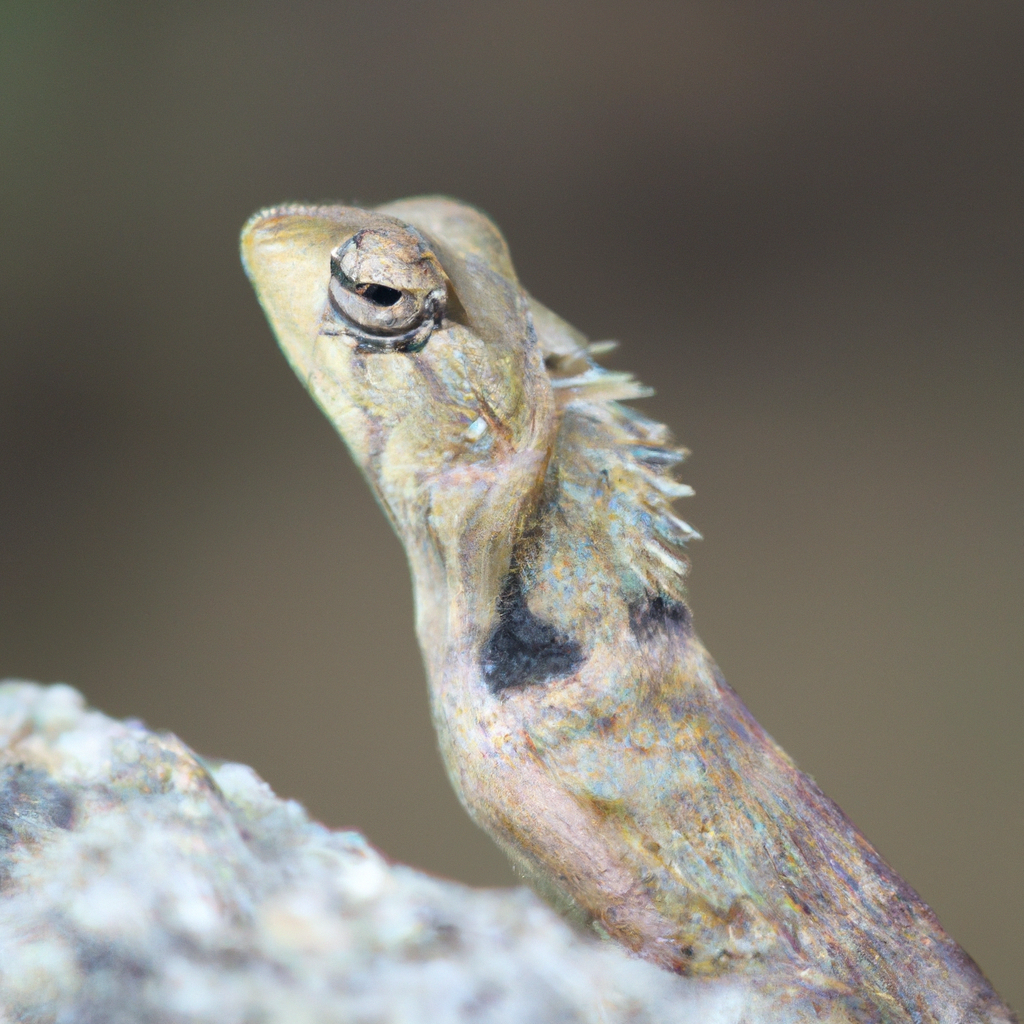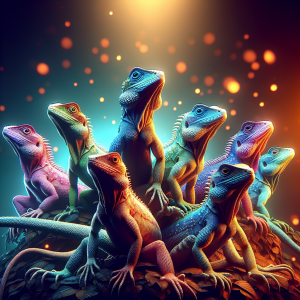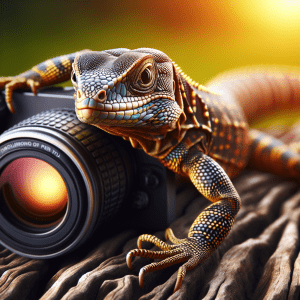The Fascination of Lizard Photography
Have you ever stopped to ponder the enchanting world of lizard photography? It’s a niche art form that combines the thrill of wildlife photography with the unique characteristics of these scaly creatures. Did you know that lizards come in a wide array of colors, shapes, and sizes, making them fascinating subjects to capture through the lens of a camera?
When diving into the realm of lizard photography, you’ll discover that these reptiles offer a plethora of photographic opportunities. From the intricate patterns on a gecko’s skin to the graceful movements of an iguana, each lizard species presents its own set of challenges and rewards for photographers.
As I delved deeper into lizard photography, I was amazed by the sheer diversity of these creatures and how each one has its own distinct charm. Whether you’re aiming to capture the stealthy agility of a chameleon or the vibrant hues of a bearded dragon, every lizard photo shoot is a unique adventure waiting to unfold.
One interesting fact about lizard photography is that these creatures are masters of camouflage, blending seamlessly into their natural habitats. This presents both a challenge and an opportunity for photographers to showcase their skills in capturing these elusive creatures in their element.
As you embark on your lizard photography journey, keep in mind that patience and observation are key. Take the time to study your subject, understand its behavior, and anticipate its movements to capture that perfect shot. Remember, each lizard has its own story to tell through your lens, so embrace the magic of lizard photography and let your creativity soar.
Choosing the Right Camera Equipment
Did you know that choosing the right camera equipment for lizard photography can make a world of difference in the quality of your shots? It’s not just about having a fancy camera; it’s about selecting the gear that suits the specific needs of capturing these fascinating creatures in their natural habitat. When I first delved into lizard photography, I thought any camera would do the trick. But oh boy, was I wrong! It wasn’t until I upgraded to a camera with a fast shutter speed and high-resolution capabilities that I truly began to capture those intricate details and vibrant colors of the lizards.
The key is to opt for a camera that allows you to adjust settings such as aperture, ISO, and shutter speed easily. These settings play a crucial role in capturing sharp images of fast-moving lizards or adjusting to different lighting conditions in the wild. Additionally, investing in a good quality lens can also significantly impact the clarity and depth of your lizard photographs. Remember, you want to be able to zoom in and focus on those tiny scales and mesmerizing eyes of the lizards without losing any sharpness.
Another interesting tidbit is that certain camera accessories can further enhance your lizard photography experience. Consider adding a macro lens to your kit to capture extreme close-up shots of the intricate patterns on a lizard’s skin or its captivating eye details. A tripod can also be your best friend when shooting lizards, especially in low light conditions or when you need to stabilize your camera for that perfect shot.
So, next time you’re gearing up for a lizard photography adventure, remember that the right camera equipment can be the secret ingredient to taking your lizard photos from ordinary to extraordinary. It’s all about finding the perfect gear that aligns with your skills and vision for capturing these remarkable reptiles in their natural splendor.
Tips for Finding Lizards in the Wild
So, when it comes to finding lizards in the wild for photography, there can be a bit of a challenge that photographers often face. Picture this – you’re out in nature, camera in hand, ready to capture some amazing shots of these fascinating creatures. But the question is, where do you even start looking for them?
One of the main challenges photographers encounter is the elusive nature of lizards. These creatures are known for their swift movements and ability to camouflage with their surroundings, making them tricky to spot. It can be like a game of hide-and-seek, where you have to be patient and observant to catch a glimpse of these elusive reptiles.
Another challenge is understanding the habitats and behaviors of different lizard species. Each species has its own preferences when it comes to habitat, temperature, and time of day they are most active. So, it’s essential to do your research and learn about the specific lizards you want to photograph to increase your chances of finding them in their natural environment.
Moreover, the controversy surrounding the ethical considerations of wildlife photography also comes into play. While capturing stunning images of lizards is rewarding, it’s crucial to prioritize the well-being of the animals and their habitats. Disturbing or stressing out lizards for the sake of a photograph is a contentious issue among wildlife photographers.
Navigating these challenges and controversies requires a balanced approach that combines respect for nature, patience, and a deep understanding of the creatures you are trying to photograph. By being mindful of these factors and honing your observation skills, you can overcome these hurdles and enhance your experience of finding lizards in the wild for photography.
Lighting Techniques for Capturing Lizards
When it comes to capturing stunning photographs of lizards, mastering lighting techniques is key. You see, lighting can make or break a photograph, especially when it comes to wildlife photography. So, let me share a practical tip with you about lighting techniques for capturing lizards.
One important aspect to keep in mind is the angle of light. When photographing lizards, you want to ensure that the light is hitting your subject in a flattering way. This can help highlight the textures and details of the lizard’s scales, making for a more visually appealing image.
Another tip is to pay attention to the time of day you’re shooting. Early morning and late afternoon are often referred to as the “golden hours” in photography because of the soft, warm light they provide. During these times, the light is less harsh and creates a beautiful glow that can enhance your lizard photographs.
Additionally, consider using diffusers or reflectors to manipulate the light. Diffusers can help soften harsh sunlight, while reflectors can bounce light back onto your subject to fill in shadows and create a more balanced exposure.
Experimenting with different lighting setups can also yield interesting results. Try backlighting your subject to create a halo effect around the lizard, or use side lighting to add depth and dimension to your photos.
By paying attention to lighting techniques and incorporating them into your lizard photography, you can elevate your images and capture the beauty of these fascinating creatures in a whole new light. So, grab your camera, head out into the field, and let your creativity shine through your lizard photography!
Composition and Framing Tips
Let me share a practical tip related to capturing stunning lizard photography. One thing that can make a huge difference in your lizard photos is the angle at which you shoot them. When photographing lizards, try to get down to their eye level. This perspective can create a more intimate and engaging photograph, allowing viewers to connect with the lizard on a deeper level.
Imagine you’re out in the field, and you spot a beautiful lizard basking in the sun. Instead of taking the photo from a standing position, crouch down to the lizard’s level. By doing so, you can capture the lizard’s unique features and details in a way that is more visually appealing.
Getting down to the lizard’s eye level can also help you create a sense of scale and perspective in your photographs. It allows you to showcase the lizard in its natural environment, giving viewers a glimpse into the world from the lizard’s point of view.
So, next time you’re out photographing lizards, remember to experiment with different angles and perspectives. Don’t be afraid to get low and close to the ground to capture that eye-catching shot. Your lizard photography will surely benefit from this simple yet effective tip, helping you create more engaging and captivating images that stand out.
Editing and Enhancing Lizard Photographs
Let’s delve into editing and enhancing your lizard photographs. Now, imagine you’ve just captured a stunning shot of a vibrant lizard basking in the sun. The colors are vivid, the details crisp, but there’s always room for enhancement. Editing your lizard photos can take them from good to extraordinary.
Have you heard this interesting fact? Editing software allows you to adjust the exposure, contrast, and colors of your lizard photographs. By fine-tuning these elements, you can bring out the intricate patterns and textures of the lizard’s skin, making your images truly pop.
Now, here’s a practical tip for you: when editing lizard photographs, aim for a balance between enhancing the image and maintaining its natural beauty. Avoid over-editing, which can make your photos look artificial. Instead, focus on enhancing the existing features of the lizard to create a visually appealing yet authentic final result.
Consider this thought-provoking question: How can editing techniques help you convey the unique personality and beauty of each lizard species through your photographs? Experimenting with different editing styles and effects can add a creative touch to your images while staying true to the essence of these fascinating creatures.
As you explore the world of editing and enhancing lizard photography, remember that your final goal is to showcase the beauty of these incredible creatures in a captivating and authentic way. So, grab your editing tools and let your creativity soar as you bring your lizard photographs to life!
Best Practices for Ethical Wildlife Photography
You know, ethical wildlife photography is a topic that’s close to my heart. It’s crucial to ensure we’re not disturbing or harming the creatures we’re photographing, right? One practical tip I’ve found really helpful in this regard is to maintain a respectful distance from the animals.
By using a telephoto lens or getting familiar with your camera’s zoom capabilities, you can capture incredible shots while still giving the lizards their space. It’s all about striking that balance between getting the perfect shot and respecting the natural behavior of these fascinating creatures.
Another important aspect of ethical wildlife photography is to avoid altering the environment or the behavior of the animals for the sake of a photograph. It’s all about observing and documenting their natural behaviors without interference. This not only ensures the well-being of the lizards but also helps in creating authentic and meaningful photographs that truly showcase the beauty of these creatures in their natural habitat.
I’ve also learned that it’s essential to educate ourselves about the species we’re photographing. Understanding their behaviors, habitats, and conservation status can help us make informed decisions while capturing their images. This knowledge not only enhances the quality of our photographs but also fosters a deeper connection with the wildlife we’re photographing.
By following these practical tips and approaches to ethical wildlife photography, we can not only improve our skills as photographers but also contribute to the conservation and protection of these incredible creatures. It’s all about capturing stunning images while respecting and preserving the beauty of nature.
Sharing Your Lizard Photography Online
Imagine this – you’re out in the wilderness, camera in hand, ready to capture the perfect shot of a majestic lizard. You finally spot one, poised for the ideal photograph. But just as you’re about to press the shutter button, the lizard decides to do a disappearing act! It’s like a game of hide and seek, except the lizard always seems to be winning.
When it comes to sharing your lizard photography online, there’s a fine line between showcasing your work and becoming a lizard paparazzi. Remember, these little reptiles deserve their privacy too! So, resist the urge to flood your social media feed with hundreds of lizard photos in a single day. Your followers might start wondering if you’ve started a lizard fan club!
Instead, consider creating a dedicated platform or gallery to display your lizard photography masterpieces. This way, fellow lizard enthusiasts can appreciate your work without feeling overwhelmed by a sudden lizard invasion on their timeline. Plus, who knows, your lizard photos might just inspire others to pick up their cameras and explore the captivating world of reptile photography.
And hey, don’t get discouraged if your lizard subjects aren’t always cooperative. They have a knack for posing just long enough to tease you before scurrying off into the sunset. Embrace the unpredictability of lizard photography – after all, it’s the unexpected moments that often result in the most memorable shots.
So, as you venture into the realm of sharing your lizard photography online, remember to sprinkle a dash of humor and lightheartedness into your posts. Your audience will appreciate the authenticity and charm of your lizard adventures. Who knows, maybe your next lizard photo will be the talk of the town (or the reptile kingdom)!
Inspiring Lizard Photography Ideas
Have you ever felt stuck in a creative rut when it comes to lizard photography? Sometimes, inspiration can run dry, and it’s challenging to think of fresh ideas to elevate your work. That’s where the concept of experimenting with different perspectives can truly make a difference.
Imagine this – you typically take your lizard photographs at eye level, capturing them in their natural habitat. While this approach can yield stunning results, have you considered getting down low and shooting from ground level? By changing your perspective, you can create unique and captivating images that stand out from the typical lizard photography shots.
One practical tip to enhance your lizard photography is to explore shooting from various angles and heights. Try climbing a tree to capture lizards from above, or get down on your stomach to photograph them at their level. These different perspectives can add depth and interest to your photos, allowing viewers to see lizards in a whole new light.
Experimenting with perspectives not only challenges you as a photographer but also opens up a world of creative possibilities. It encourages you to think outside the box and push the boundaries of traditional lizard photography. So, the next time you’re out in the field with your camera, don’t be afraid to crouch, crawl, or climb to discover new angles that showcase lizards in a fresh and exciting way.
By incorporating varied perspectives into your lizard photography repertoire, you’ll not only diversify your portfolio but also hone your skills as a versatile and innovative photographer. So, go ahead, step out of your comfort zone, and see how a simple change in perspective can transform your lizard photography into something extraordinary.
Conclusion: Elevate Your Lizard Photography Skills
Hey there! So, the other day, I was out in the desert trying to capture some lizard photographs, and let me tell you, it was quite an adventure. I had my camera all set up, waiting patiently for the perfect shot of a colorful lizard basking in the sun.
As I was focusing my lens, this little lizard suddenly darted out from under a rock and scurried away faster than I could click the shutter button. It was like a game of hide-and-seek with these elusive creatures! But finally, after some patience and persistence, I managed to capture a stunning close-up shot of a lizard blending perfectly with its surroundings.
That experience made me realize the importance of being quick on your feet and adapting to the unpredictable nature of wildlife photography. It’s all about being in the right place at the right time, ready to seize the moment when a lizard crosses your path.
Have you ever had a similar encounter while trying to photograph lizards? It’s these unexpected moments that make lizard photography so thrilling and rewarding. Each lizard has its own personality and unique features that make for captivating photographs.
So, the next time you’re out in nature with your camera, keep an eye out for these fascinating creatures. Who knows what kind of lizard adventure awaits you? Embrace the challenge, stay patient, and let your creativity flow as you capture the beauty of these incredible reptiles through your lens. Happy lizard photography!




